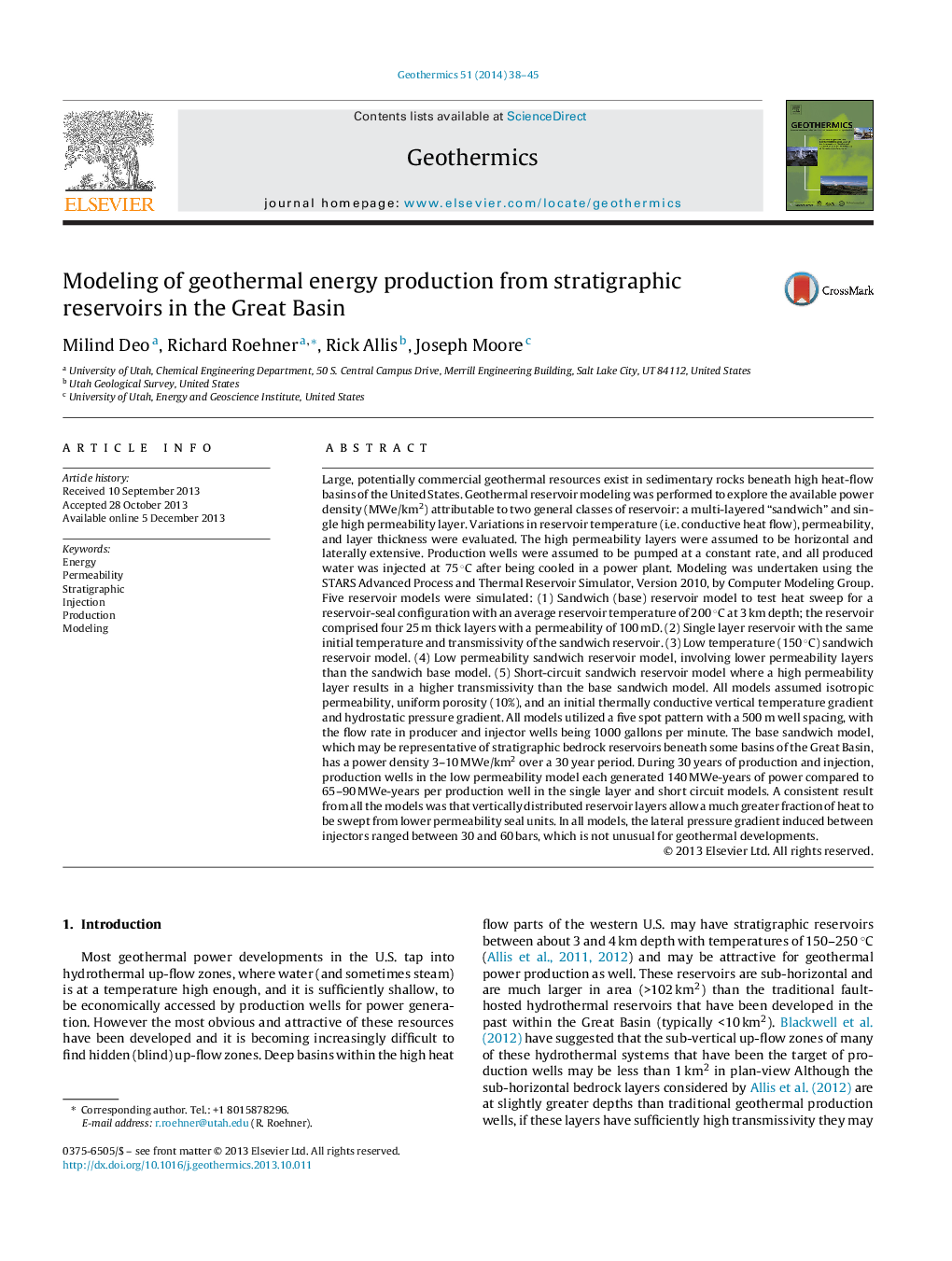| کد مقاله | کد نشریه | سال انتشار | مقاله انگلیسی | نسخه تمام متن |
|---|---|---|---|---|
| 1742372 | 1521917 | 2014 | 8 صفحه PDF | دانلود رایگان |
Large, potentially commercial geothermal resources exist in sedimentary rocks beneath high heat-flow basins of the United States. Geothermal reservoir modeling was performed to explore the available power density (MWe/km2) attributable to two general classes of reservoir: a multi-layered “sandwich” and single high permeability layer. Variations in reservoir temperature (i.e. conductive heat flow), permeability, and layer thickness were evaluated. The high permeability layers were assumed to be horizontal and laterally extensive. Production wells were assumed to be pumped at a constant rate, and all produced water was injected at 75 °C after being cooled in a power plant. Modeling was undertaken using the STARS Advanced Process and Thermal Reservoir Simulator, Version 2010, by Computer Modeling Group. Five reservoir models were simulated: (1) Sandwich (base) reservoir model to test heat sweep for a reservoir-seal configuration with an average reservoir temperature of 200 °C at 3 km depth; the reservoir comprised four 25 m thick layers with a permeability of 100 mD. (2) Single layer reservoir with the same initial temperature and transmissivity of the sandwich reservoir. (3) Low temperature (150 °C) sandwich reservoir model. (4) Low permeability sandwich reservoir model, involving lower permeability layers than the sandwich base model. (5) Short-circuit sandwich reservoir model where a high permeability layer results in a higher transmissivity than the base sandwich model. All models assumed isotropic permeability, uniform porosity (10%), and an initial thermally conductive vertical temperature gradient and hydrostatic pressure gradient. All models utilized a five spot pattern with a 500 m well spacing, with the flow rate in producer and injector wells being 1000 gallons per minute. The base sandwich model, which may be representative of stratigraphic bedrock reservoirs beneath some basins of the Great Basin, has a power density 3–10 MWe/km2 over a 30 year period. During 30 years of production and injection, production wells in the low permeability model each generated 140 MWe-years of power compared to 65–90 MWe-years per production well in the single layer and short circuit models. A consistent result from all the models was that vertically distributed reservoir layers allow a much greater fraction of heat to be swept from lower permeability seal units. In all models, the lateral pressure gradient induced between injectors ranged between 30 and 60 bars, which is not unusual for geothermal developments.
Journal: Geothermics - Volume 51, July 2014, Pages 38–45
